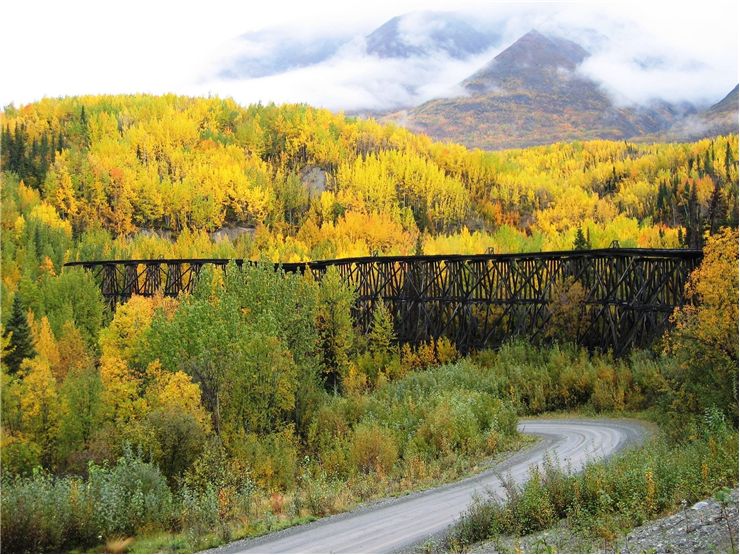Trestle - Design and Types of Trestle Bridges
A trestle bridge consists of a certain number of short spans which are supported by trestle frames. Through history, trestle, being a rigid and strong frame in the form of a tripod, was used to support different flat surfaces ranging from stools and tables to bridges. Early trestle bridges used timber as support and, due to the nature of wood as a construction material, they had limited life span and were expected to be a temporary solution to transport needs on railroads. They were built over deep valleys and added up to 3% of the total rail transport surface.
Temporary trestles were mostly replaced by solutions enabled by the use more modern technologies which made it cheaper to construct a fill without the need to use a trestle construction at all, and the wooden trestles were replaced by steel and concrete ones. When iron and steel began to be widely used by the end of 19th century, new bridge constructions were used such as trusses, beams, girders and spans.

With the increased use and development of railroads, especially in the USA, civil engineers had to deal with rough, unstable and often dangerous terrain and make sure that rails are adequately supported by trestle construction which was meant to be filled with solid material. When building railroad tracks across wide and deep valleys, trestles made of wooden timber were built to keep the track solid and safe high above the ground. Most trestles were meant to be temporary, allowing trains to transport materials necessary to create a solid fill beneath the tracks.
On the other hand, rather than temporary, trestles were used as permanent bridge support in sections of tracks where water flow or sudden flooding could cause solid fills to become unsafe. Despite the frail looks of trestle bridges, they remained a safe passage for freight trains around the still settling the United States while exploring and populating and developing western territories. In the United Kingdom, wooden trestles were used for a relatively short period of the main use of crossing deep valleys in mountainous areas and were soon replaced by stone, and concrete viaducts with only a few wooden trestles continued to be in use into the 20th century.
The National Trust of Australia still strives to preserve a few of the surviving timber trestle bridges, some of which are more than a century old and were heavy-duty support for coal transport in remote, often bushy parts of Australia where timber was also replaced by iron and steel due to their resistance to fire and earthquakes. The new more rigid and much stronger materials also brought fewer derailments and simplified the maintenance of the bridges as well.
Although when one looks at a good old trestle bridge and has doubts that such seemingly fragile construction could hardly support a person and let alone a freight train, to this day, wooden, steel and concrete trestle bridges prove one wrong and remain reliable traffic infrastructure support on railroads around the world. Others which are now obsolete, out of use but well-preserved remain fascinating sight and popular landmarks, remnants of the past and nostalgic places of interest for tourists.
Types of Trestles
There are many different types of trestle bridges depending on materials used for trestle frames. Here are some of general categories of trestle bridges:
- Timber Trestles
- Coal Trestles
- Wooden Trestles
- Wooden Railroad Trestles
- Stone Trestles
- Iron Trestles
- Cast Iron Trestles
- Wrought-Iron Trestles
- Steel Trestles
- Concrete Trestles
